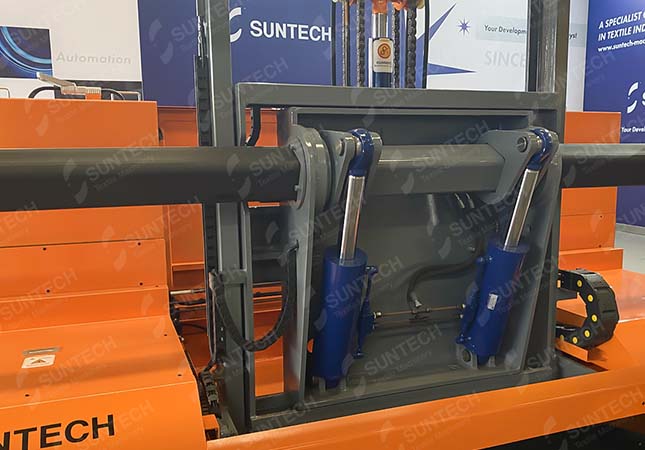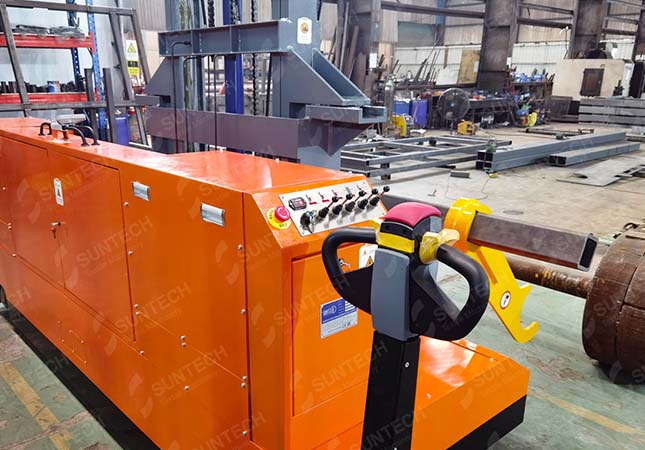During the three years of the pandemic, countries have experienced a series of shutdowns and suspensions of production. Labor-intensive industries such as textiles and manufacturing, which require a large workforce, have been forced to halt their operations. As a result, they have lost orders, worsening the already struggling economy.
Even after the pandemic, the textile and manufacturing industries still face a crisis of transformation. Due to low salaries and poor working conditions, these types of enterprises have difficulty attracting talent. Consequently, many companies have been forced to continuously increase wages to retain their employees, leading to further decline in profits and creating a vicious cycle. Faced with the challenges of labor shortage and rising labor costs, the textile and manufacturing industries must replace manual labor with intelligent manufacturing and transform into intelligent enterprises.

In recent years, artificial intelligence, including machine perception, machine learning, and machine thinking, has been partially applied in certain areas of the textile industry, achieving preliminary progress.
1. Intelligent Manufacturing
Artificial intelligence technology promotes the development of new models, new methods, and new systems in intelligent manufacturing. It is the core technology and the most widely applied area in textile intelligent manufacturing. It involves various aspects such as production process feature extraction, production process optimization, production planning and scheduling, equipment scheduling algorithms, production process optimization and control, quality inspection and management, intelligent connection of production operations and material handling, equipment fault localization and diagnosis, etc. A series of gratifying achievements have been made in product feature recognition, quality inspection, and production logistics handling.
In the current textile intelligent manufacturing projects, there is still a lack of intelligent functions such as knowledge acquisition, knowledge base construction, deep learning, and optimized decision-making. It is necessary to focus on improving these aspects in the next stage, enhance the level of intelligence based on automation, digitization, and networking, and truly realize intelligent manufacturing.
2. Textile Analysis and Design
In recent years, artificial intelligence technology has been applied in various fields of textile design, fabric defect identification and analysis, fabric performance evaluation, cotton impurity classification and grading, pilling rating, dyestuff absorption rate calculation, etc. It can also be used to analyze and predict various properties of textiles, such as breathability, wrinkle resistance, abrasion resistance, and other indicators. By using technologies such as computer vision and machine learning, it is possible to detect and analyze defects, color differences, patterns, pilling, and fuzzing in printed and woven fabrics, thereby solving long-standing technical difficulties and significantly improving the level of recognition and analysis.
In the next stage, artificial intelligence technology will be introduced into textile design systems to enable them to have logical reasoning and decision-making abilities. With the computer as the main driver and relying on knowledge bases and autonomous learning systems, a large number of design examples, experiences, and criteria will be combined to continuously narrow down the scope of exploration based on design goals, ultimately achieving the desired design effects.
3. Trend Research
Based on the vast amount of data accumulated on the internet, artificial intelligence technology has great potential for development in the field of textile and fashion trend research. By leveraging computer vision and image processing technologies, analyzing massive photos allows for quick retrieval of user-preferred colors, patterns, and styles. By analyzing consumer color preferences and consumption habits data, it is possible to identify commonly worn colors in different age groups and summarize different trending colors. In terms of trend forecasting, the application of artificial intelligence technology will significantly outperform current modeling methods. It can accurately address many complex problems and become an ideal tool for fashion innovation in the textile and clothing industry in the next stage.
The textile industry is a labor-intensive industry where many operations, including production and quality control, are primarily carried out by manual labor. This not only leads to low efficiency and high error rates but also, in recent years, with the increase in labor costs, the labor cost has remained high. Labor costs, raw material costs, and environmental pressures are the main pressures faced by Chinese textile and clothing enterprises. Accelerating industrial transformation and upgrading, improving total factor productivity and sustainable development capabilities, effectively addressing resource and environmental constraints, and better participating in international market competition and global industrial division of labor are the urgent tasks facing the development of the Chinese textile industry. More and more textile enterprises are choosing to improve technological upgrading as the key to overcoming these challenges.
Artificial intelligence innovation, based on basic actions such as detection, recognition, inspection, grading, machine vision, and prediction, utilizes intelligent application control of textile processes through expert systems, artificial neural networks, fuzzy logic, algorithms, and natural language. This improves textile efficiency and quality while reducing labor costs.
In the next 2-3 years, the textile industry needs to seize the historical opportunity and accelerate the application and development of artificial intelligence technology. It should become a strategic technology that leads the future, driving the improvement of intelligent levels in various textile fields and bringing about profound changes. The far-reaching significance of this should not be underestimated. In the promotion process, it is crucial to accurately grasp the characteristics of artificial intelligence technology and closely integrate them with the needs of textile enterprises.
SUNTECH Textile Machinery aims to improve the current production situation in the textile industry by addressing labor costs. With 50 years of design experience and technological accumulation, SUNTECH Textile Machinery has developed and produced motorized beam trolley. Through precise mechanical design, the mechanical components can precisely remove the warp beams and cloth rolls from the looms and seamlessly load them onto the beam trolley. After smooth transportation, they are delivered to the beam storage area. The warp beams and cloth rolls are loaded into the storage area through mechanical lifting processes. The motorized beam trolley from SUNTECH Textile Machinery are responsive, work smoothly, and are easy to operate. They have large loading capacities and require fewer handling operations. They adapt to various working environments and overcome the limitations of manual handling. They can reduce the labor intensity of textile industry workers, improve work efficiency, significantly reduce labor costs, and enhance production results and product quality.
SUNTECH motorized beam trolley technology is highly mature, with more than 5,000 customers and over 17,000 successful cases worldwide. According to customer feedback, one electric beam vehicle can increase handling efficiency by more than 50%, saving over 60% of labor and costs. The annual cost savings can reach hundreds of thousands.

SUNTECH motorized beam trolley can intelligently handle a large number of fabric rolls, cloth materials, warp beams, and cloth rolls. They have a small footprint, large capacity, fast handling speed, flexible movement, stable transportation, and easy loading and unloading. They have strong adaptability to different sites. With electric and intelligent beam trolley, they facilitate efficient production, reduce labor costs, and improve profit margins in the textile industry. For more information, please feel free to inquire.




